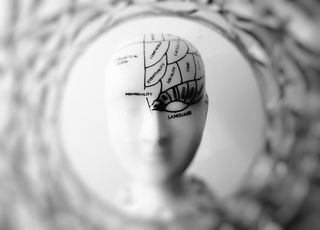Misophonia
Is Cognitive Therapy a Treatment for Misophonia?
Research from the Netherlands puts this to the test!
Posted July 3, 2018

Last year I had the pleasure of interviewing Arjan Schröder and Nienke C. Vulink in regard to their 2017 article Cognitive behavioral therapy is effective in misophonia: An open trial. Please note that Dr. Schröder, at the time was a doctoral student under the supervision of Dr. Damiaan Denys. Writing this post was rather delayed, yet I think the timing is appropriate. At least 3-4 times a week someone with misophonia asks me if “CBT works”. In addition, there are numerous clinicians and researchers recommending CBT as a stand-alone “treatment" for misophonia”, rather than as a part of a larger coping skills management plan.
In their paper, the authors report that CBT is effective in 48% of their patients. Notably, the criterion for “effective” was showing a 30% or greater reduction in their symptoms as measured by the very same scale that this research team developed (The A-Miso-S). The authors are careful to point out that this is not a claim that CBT is effective. Rather, it is a candid reporting of the results of their open trial (i.e. their intervention was helpful to almost half the participants, but only with a 30% reduction of symptoms). It is important that we both view and utilize this information to inform further treatment research.
It is also interesting that while the title of the article suggests that the researchers used CBT, their intervention actually included a much more multi-faceted approach. Notably, what these and many other doctors, call treatment, I would characterize as “coping skills development." However, for the moment, let's put this difference aside and call it rhetorical (although ultimately I do believe it is important).
First, it is important to mention that Arjan Schröder and the AMC team suggested that misophonia should be classified as an OC and Related Disorder in the DSM-5 in their 2013 paper. At the time, Schröder was just beginning to look at misophonia, as were others in the field. In addition, the classification of OCD changed to OC and Related Disorders from the DSM-IV TR to DSM 5. This is also part of the confusion, that continues to negatively impact diagnosis. That is, the DSM is far from a perfect diagnostic instrument, to say the least. For the record, Drs. Denny's and Schröder have both told me that they no longer fully agree with this original notion. This is a very important step for those who suffer from misophonia, and for those who are at the forefront of misophonia research.

Notably, other researchers still suggest that misophonia is an OC and Related Disorder. Consequently, these researchers continue to suggest interventions, such as graded exposure therapy (which I will speak about later in the post). This still leaves us in a great deal of confusion. It is interesting to look a bit further into this.
One of the reasons misophonia is continually compared to other psychiatric disorders may have to do with the higher prevalence of adult researchers interested in the disorder (as compared to early childhood researchers). There is a myth that young children do not have misophonia. This simply isn’t true. Many young children have misophonia (i.e. the same trigger sounds followed by an immediate fight/flight reaction).
In a young child, one can see this reactivity in its more organic form. Young children respond with a variety of observable behaviors when exposed to trigger sounds. These behaviors include crying, placing their hands over their ears, running away and yes, sometimes aggressive words or gestures toward another (if the sound is emanating from a person). However, most of the time (and I’m not saying all the time) when the trigger sound is removed the child immediately appears to go back to homeostasis (or a calm state). When you see this, the idea that a child is obsessing over the sound falls flat. Again, research tells us that misophonia co-occurs with various psychiatric, developmental, and health conditions. Therefore, it is possible that these disorders might overlap. However, it is certainly not definitive.
Seeing misophonia in a very young child also debunks the idea that “anger is the only emotion involved”. I've seen children crawl under couches, rather than be aggressive. Have you?
Back to the interview… Why was I surprised by what I heard about the treatment at AMC? Well, as the academic paper suggests I assumed I was going to hear about CBT. Yet, the AMC misophonia treatment plan includes much more than CBT. The treatment paradigm includes group therapy that helps sufferers “disconnect negative emotions from sounds”, along with attention training, and some desensitizing to the sounds. However, regarding desensitization, the individual was in control of the sound exposure in the treatment trial. So, do not confuse this with systematic desensitization/ graded exposure therapy (which I will address later). In fact, Dr. Deny's is adamant that he does not believe in this kind of exposure therapy for misophonia.
Although, the article delineates these four aspects of treatment as “different kinds of CBT”, I think it is worth exploring each facet on its own. Let's begin with group therapy. As Dr. Schröder pointed out, it is helpful for people with misophonia to meet others with misophonia. This is why the team chose group therapy. As Dr. Schröder said (and I am paraphrasing) “meeting others with the same disorder helped people to feel less alienated”. Certainly, group therapy can be difficult for those with misophonia. However, if the AMC team was able to provide an environment where group support was helpful then this is valuable information to consider. We all know that individuals with misophonia often utilize support groups. I would like to know more about how the AMC team avoided the obvious obstacles to misophonia group therapy.
Next, let's look at the idea of attention training. Part of the treatment involved participants playing physically oriented games (e.g. bouncing a ball attached to a paddle), in order to distract them while facing triggering situations (e.g. while people are eating). Learning how to refocus attention away from offending sounds can be helpful. According to the researchers, once a person knows they can refocus attention, it has an overall calming effect. Because people with misophonia feel attacked by the environment on a continual basis, any control that one can implement is relieving. Learning how to refocus can be empowering and may help one to feel a bit less overwhelmed by the disorder. However, there is a difference between some alleviation in terms of the stress that comes from living one’s life with misophonia, as opposed to the neurophysiological reactivity the individual experiences “in the moment.” In other words, it is NOT easy to refocus one’s attention in the face of trigger sounds, or visual stimuli. Many people ask me why individuals with misophonia focus more on trigger sounds than other stimuli in the environment. I am often asked by parents, teachers and others, “Why does [ ] stare right at the person who is making the sound rather than turning away?” This is a question that is certainly worth a few paragraphs.
I have often said that a simple explanation of misophonia is “the brain is misinterpreting sounds as though they are dangerous, or toxic, and as a result, the fight/flight system is activated within milliseconds." However, before we can interpret or misinterpret auditory stimuli, we must alert to it. Alerting to sounds prior to becoming aware that we are doing so, involves “pre-attention.” Science hasn’t revealed exactly when attention moves from pre-consciousness to conscious. However, our brains focus our attention based on a hierarchy of survival advantage without our knowing it, or choosing where or what to attend to. Eventually, the conscious mind allows us to “think about” what we are attending to and can make alterations. Interestingly, this is a process the AMC team has looked at in misophonia.

I know I always use the example of a dog. However, it’s a great one because most of us have seen how our canine friends respond to sounds in their environment. Think of how a dog “pricks up its ears” when it hears a sound that may signal a potential threat. This could be a loud sound or a quiet sound. Without “thinking” (or conscious awareness) the dog’s brain will alert to these sounds, as potential threat cues. We’ve all seen a dog go on “high alert” in response to a sound (or even an odor). The dog becomes vigilant and stays that way until he knows he’s safe. We see the dog’s pre-attentive state (prick’s up the ears even if sleeping) and we see the dog either going back to sleep, moving toward the sound and possibly growling to protect territory or the “pack”, or running under the nearest place to hide!
Retraining attention is certainly a reasonable idea on its face. However, given the power of pre-attention, particularly involving potential threat, we must understand that this is an extraordinarily difficult task, and extremely difficult to learn. We are fighting against part of our survival system, which has been perpetuated throughout evolution.
I’m not saying we shouldn’t try to develop this skill, but don’t expect it to be a reliable panacea. I do believe that engaging in physical activity that demands attention can help the brain “over-ride” pre-attentive or even conscious attention to triggers. Trigger sounds may be less noticeable to a person in motion. However, it is also true that we process sound, and all of our senses differently, when we are moving. Therefore, we might extrapolate that movement itself contributed to some of the trial's efficacy. Regardless, practicing this in an artificial set-up versus doing this in real-life are very different. This is often a pitfall with treatment studies.
Finally, separating trigger sounds from the emotions that accompany them... within the group therapy process. Of course, this is helpful, extremely helpful! Yet, this is not a process as simple as separating an egg white from its yolk. In fact, it is a very complicated process mediated, again, by autonomic nervous system arousal occurring before cognition can be employed. The ability to use cognition to separate trigger sounds from emotions is also impacted by age, development, and variations in personality, memory, and much more. It is a very important goal for people with misophonia. Yet, to understand the complexity of the interacting forces of automatic unconscious reactivity, and the conscious declaration of an emotion is far from simple.
In conclusion, we can’t hold up the CBT flag for misophonia treatment just yet, and it seems apparent that more researchers agree about this, while also coming around to what misophonia sufferers have known all along - graded exposure therapy for the purpose of habituating to sounds does not work.
It is great to see psychologists and psychiatrists trying to find misophonia treatment. However, I hope as the research moves forward, with more unity and knowledge, we will also move toward more multi-disciplinary research and treatment trials.
For an academic literature review about misophonia http://bit.ly/2KHuQgf
For more information about misophonia https://www.misophoniainternational.com/
For videos about misophonia and videos about brain processes http://bit.ly/2MJYZci




